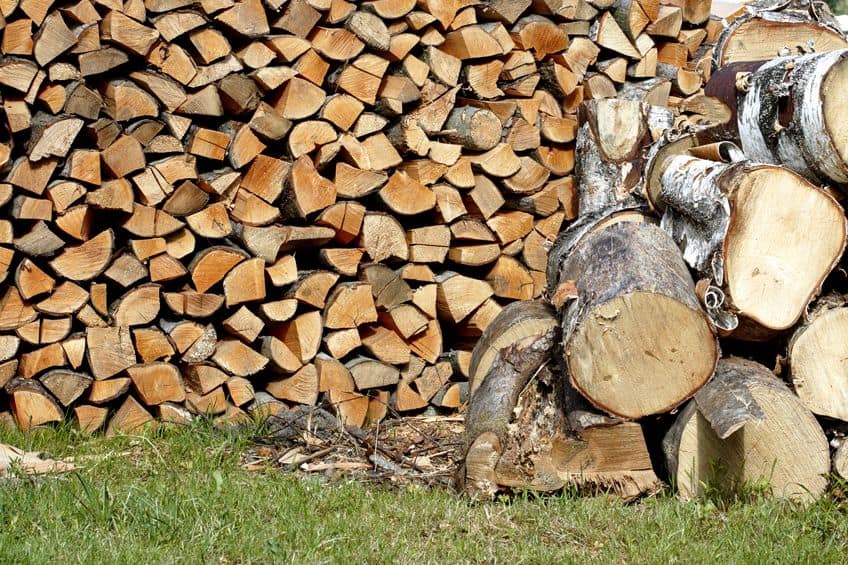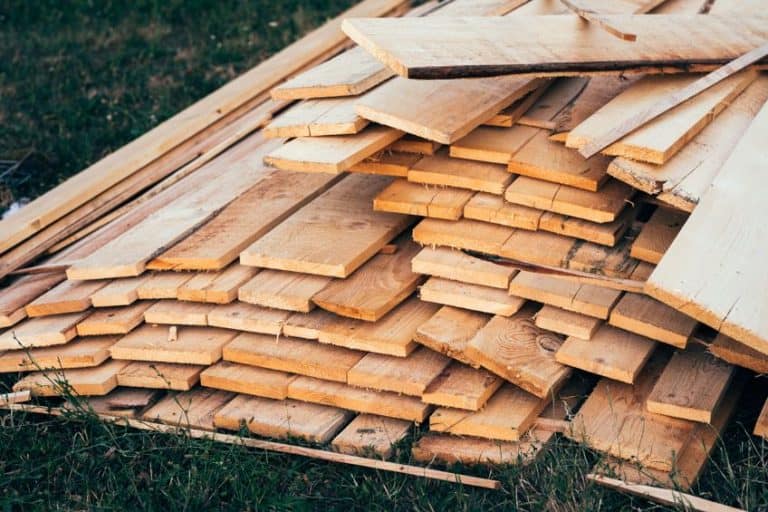How Much Is a Cord of Wood? – How to Measure a Cord of Wood
What is a cord of wood? During those cold winter months, most of us want to curl up in an armchair and let the warmth of a fireplace come over us while we watch the snowfall. The only problem is that fires typically need wood to burn, and if you aren’t careful you could get the wool pulled over your eyes by a crafty wood seller. Let us have a look at how much wood costs, how you can get the best deal by knowing your way around timber, and what a cord of wood is.
How Much Can a Cord of Wood Cost?
A cord of firewood should cost between $120 to $180 depending on the state you live in. Following the rules of supply and demand, these prices can increase to as much as $400 in the winter months. Other variables of supply and demand apply as well, such as scarcity, region, condition of the wood, the type of wood you are purchasing, and even whether you’re going to get it delivered or pick it up can affect the price of your cord. A cord of wood price can even fluctuate according to type rarity.
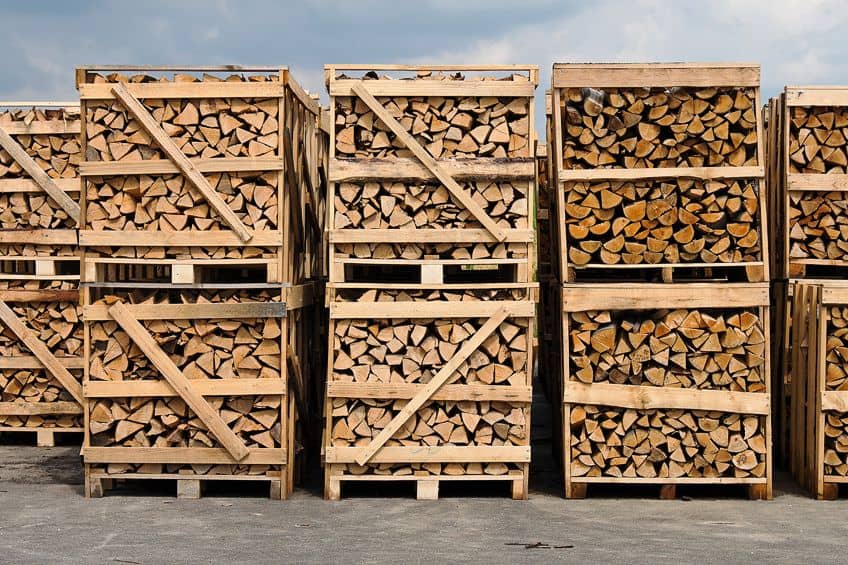
How to Calculate How Much Wood Is in a Cord
A simple way to calculate how much wood is for a full cord specifically is to use the volume as a baseline metric. Volume is calculated using the formula length multiplied by breadth multiplied by the height. Using this formula, the length of a full cord is equal to four feet, the breadth is also equal to four feet, and the height is equal to eight feet.
Therefore, the overall equation will be 4 ft x 4 ft x 8 ft, which is equal to 128 ft cubed (the measurement of a full cord)
The space the cord of wood occupies does not consist of 100 percent wood though – remember that there are gaps of air in-between these logs, so conservatively we can remove ten percent of the mass from the 128 ft cubed leaving us with 115 ft cubed. The general estimates of a full cord in bd (board foot) are roughly 500 bd or up to 1000 bd for smaller logs, therefore simply take the 115 ft cubed and divide it by 41.67, and then multiply it by the 500 bd we mentioned previously.
In the end, your equation and answer should look like this:
(115/41.67) x 500 = 1,380 bd
Remember that this calculation uses the dimensions of a full chord – if you would like to calculate how much wood is in a face cord, you can simply plug in the values we provided previously for the face cord into the equation, and you will have your answer.
What Is the Difference Between a Full Cord and a Half Cord?
What is a cord of wood? If you are new to the timber scene don’t let the lingo confuse you. These are terms that have been coined by purveyors of wood for years and it’s rare that those who are not in the trade or don’t purchase wood regularly know any of these terms. This being said, here are some definitions that we think might help you navigate the forums and conversations you might have in the future.
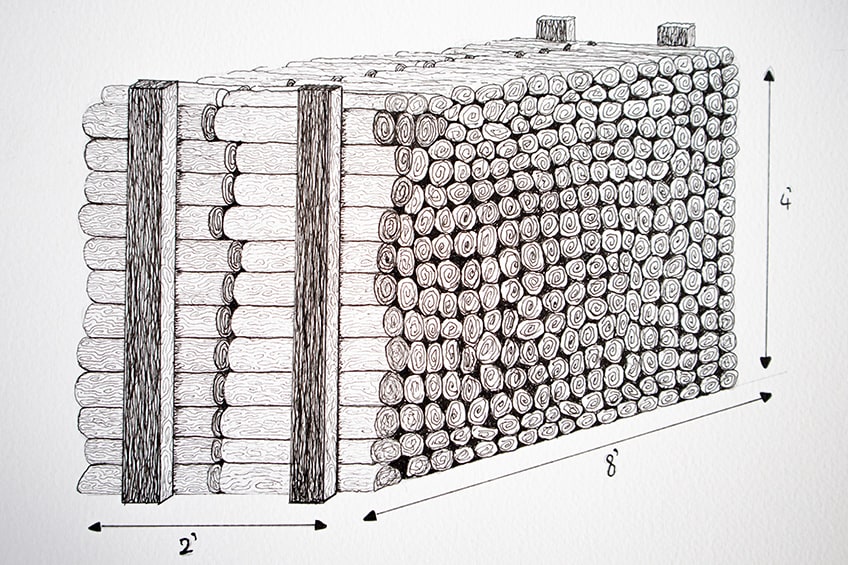
Full Cord
A full cord of firewood is characterized as a pile of wood that fills a space exactly 4 ft in length, 4 ft in width, and 8 ft in depth. The equation when checking if you have a full cord in front of you should therefore be 4 x 4 x 8, which means that you will have a pile of wood in front of you with the total volume (or space filled) of roughly 128 ft cubed.
Should you wish for an exact measurement, you can account for the approximate amount of space filled by just the logs by subtracting ten percent from your final volume metric.
Remember that the difference between a full cord and a face cord can be difficult to determine, and although they may look the same at first glance, don’t let a slick salesman convince you that you are buying a full cord. Bring a measuring stick or tape measure with you if you intend to buy wood in these volumes so that you can check for yourself.
Face Cord
A face cord is characterized as a pile of wood with dimensions of 8 ft in length, 4 ft in height, and an indeterminant width. Although some sources say this measurement should be roughly 2.7 ft, this has not been verified and can differ between establishments and sellers. For the sake of simplicity, you could say that a face cord is any pile of wood that measures four feet high and eight feet long from the front-facing view of the pile.
What to Consider Before Buying a Cord of Wood
There are a few things to consider before you buy a cord of wood. Besides pricing and quantity, things such as quality, type, density, and even smell should be taken into account to avoid ending up with buyer’s regret. Let’s have a look at some things you should think about before stocking up on wood.
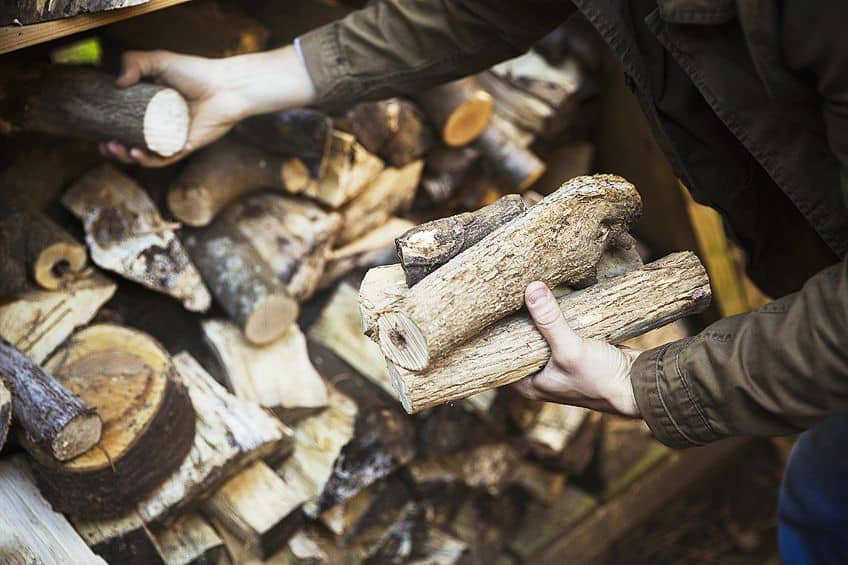
How Much Can You Carry?
If you are on a budget, the option of having what is essentially a small shipping container of wood delivered is probably not an option. Considering that wood is one of the best ways to stay warm during those cold winter months as well as to have yourself a lovely barbeque during the summer months, it is safe to say that you better know how much you can carry.
If you own a pickup or a regular commuter car, check the weight rating on the vehicle and ensure that you have the correct straps and/or harnesses to secure the wood for the journey. The last thing you want is to be on your way home only to notice that half your stockpile is littered all over the highway, thus becoming a hazard for everyone behind you.
Is the Wood Wet or Dry?
Examining the cord before you go ahead and buy it is extremely important. This is especially important when you are not buying from a reputable retailer, as there are individuals out there who could try and convince you that the wood is ready to burn when in reality it has been standing outdoors and is soaked to the core.
This illusion is easily achieved by simply drying the outward-facing parts of the pile and masking the smell, but the good news is that there are ways to ensure that your wood is dry and ready for use. Dry wood, which is ready to use, will be brittle, lighter in color, and will sound hollow when tapped with another piece of wood due to the lack of water present inside, making it less dense. Dry wood is also lighter than wet wood.
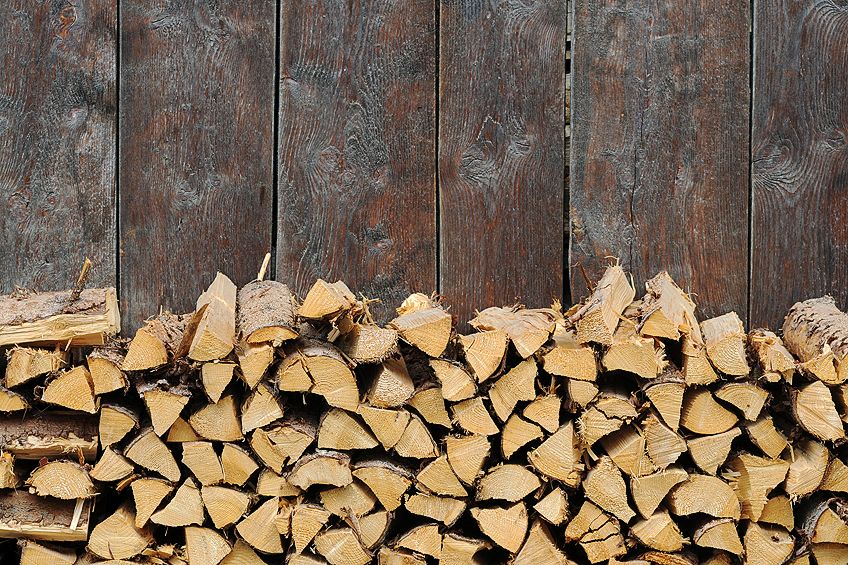
Is the Type of Wood Ready to Burn?
If you have ever been around a campfire and had some smoke blow your way that did not quite smell right, the chances are that the wood that had been burning had not been cured correctly and was therefore not suitable for burning. This is not always a bad thing, and this type of wood (known as “green wood”) does have its uses – in fact, some actually prefer it over traditionally dried wood. However, if you intend to start a fire as soon as you get home, you should probably go for seasoned firewood.
Seasoned firewood is wood that has been found, cut, and dried specifically for the use of burning.
When wood suppliers select wood for seasoning, they will allow the cord of wood to cure and become as dry and brittle as possible, ensuring to moisture comes in contact with the surface of the logs especially rain and humidity. Seasoned wood will always be a bit cheaper than green wood because of the supply and demand factor we covered previously; because people prefer and therefore purchase seasoned wood more, it can come at a premium compared to the green wood.
Are You Equipped to Store Your Wood?
If you are a decent negotiator, know exactly what you want, and know exactly where to get it, then acquiring a cord of wood should not be a problem for you at all. You might encounter a small problem once you get home, however, if you have not thought ahead. These days, space can often come at a premium, and if you don’t have sufficient space to store your new stockpile you could risk it deteriorating if it is left outside for too long.
Some people buy green wood because it is cheaper, although if they intend to use it as firewood, they usually buy it proactively and give it enough time to dry out before they need to use it.
If this is the case, you should not only pre-emptively create the necessary space for the wood to be stacked in, but also ensure that your wood has a decently ventilated environment in which to season – this should be free of moisture and stacked in such a way that it won’t be a potential hazard if you need to remove some from the pile.
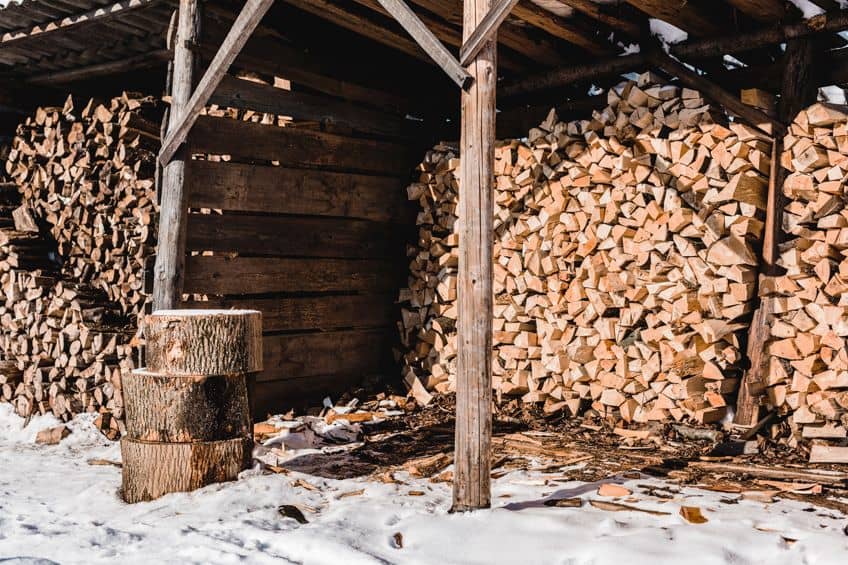
The Correct Way to Store Your Firewood
Storing firewood can be a tedious and hazardous task not only due to the flammable nature of seasoned cords, but the weight of the pile as well. Let us have a look at some of the things you can do to ensure that your wood is stored in a stable, safe, and easily accessible manner.
Stacking
Stacking your wood is one of the common ways to store your wood. There are lots of methods to stacking your wood, in fact, there are some YouTube tutorials available that show you even more efficient ways to go about this. Most people know that you should not store your wood directly on the ground if you are going to be stacking it – if you did not already know this, it is because wood that comes into contact with the ground has a good chance of absorbing moisture (think about tree roots). You also have the option of storing wood in low piles in a criss-cross pattern to reinforce stability.
A good way to get around this is to use something like a wooden pallet or a row of bricks as a base to start your pile on.
This will create a buffer between the ground and your cord, reducing the chance of it absorbing moisture, and while you are making your stockpile remember to start with the oldest wood you have at the bottom. If you will be storing your wood outside, it won’t be a particularly good idea, but should this be your only option, simply throw a covering over the top layer of the pile to protect it from the elements without restricting airflow.
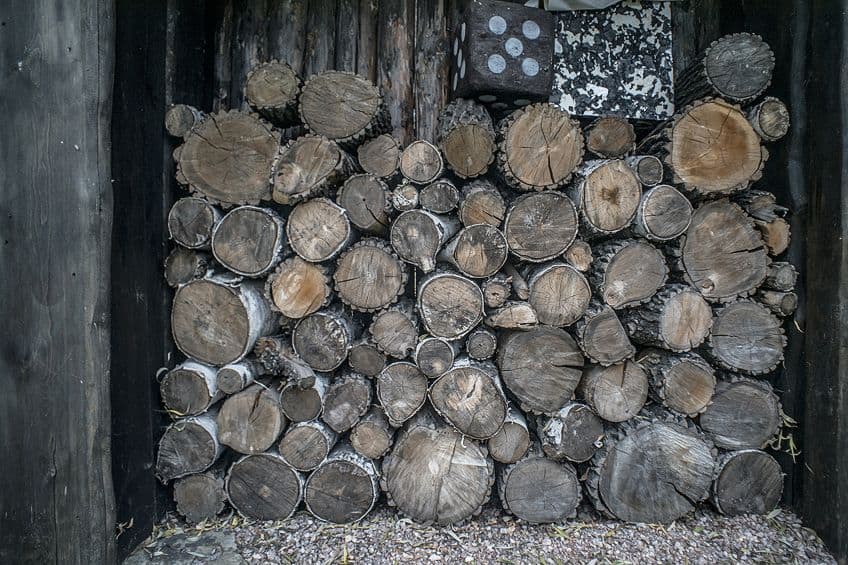
Firewood Rack
Using a firewood rack is the ideal way to store your wood. Whether it be an indoor or outdoor rack, it will provide you with the peace of mind that your pile won’t go blowing over if an extra-strong gust of wind blows through. Firewood racks can vary in price and size, so picking one can be tough, especially if you have decided to buy a cord.
A rule of thumb for an indoor rack is that you should only keep about two days’ worth of wood on hand, since wood can attack insects and a larger pile is a potential fire hazard.
Indoor racks come in the form of baskets that you simply fill by placing the wood vertically. You could also go for the wheeled tray variety, which you is equipped with shelves and wheels for easy access and mobility to and from your stockpile. Outdoor racks are typically pretty big, but are available in the small and medium variety too – some are even available with a retractable or removable tarp for added protection from wet conditions. Just like indoor racks, depending on the type you opt for, you can have a rack that stores your wood in a pile or one with dividing shelves for easy access.
How Much Wood Can a Pickup Truck Hold?
Unless you are in the mood to rent a U-Haul or are having your cord of wood delivered, you are going to need a pickup truck. In this case, you should look up what kind of tonnage your truck can handle and take a look at some add-ons that might help to haul wood in these volumes.
You can add a rack to the bed of the truck and other locking mechanisms, but you should be wary of the height restrictions in your state to avoid any fines, or worse, wood flying off the top mid-transit. This being said, let’s have a look at some trucks and what their recommended tonnage is.
Remember that a full cord of wood can weigh roughly 5000 lbs, so you should be sure of your truck’s tolerances before making an attempt.
Types of Trucks and Their Weight Tolerances
Not all trucks are made equal and therefore some have a greater load capacity and weight tolerance than others. Here are three types of pickups and their respective tolerances for cords of wood. Keep in mind that exceeding these tolerances creates a hazardous situation for fellow road users and yourself.
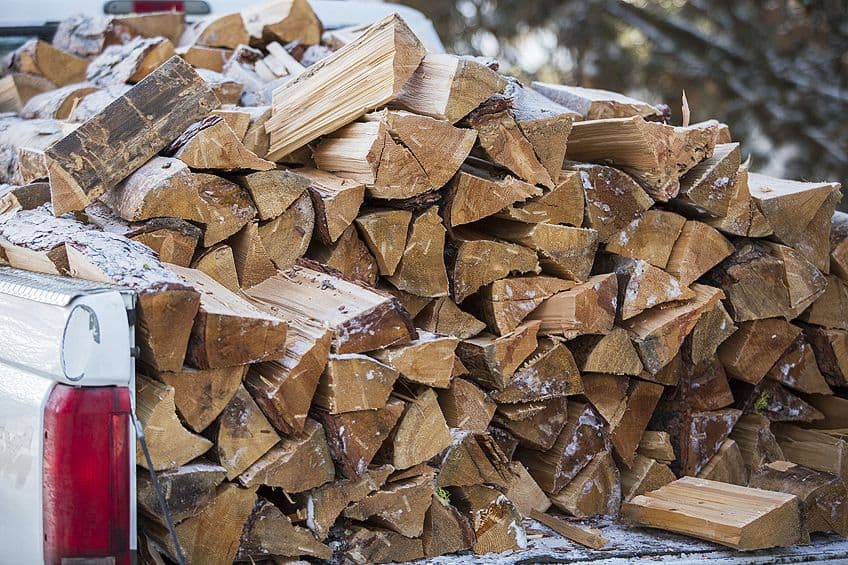
Small Pickup
Small pickups are rated to carry about a quarter-ton (1/4 T) with racks, which means that you won’t be taking a full cord home in one trip. A quarter-ton load will leave you hauling about half a cord, which is 64 cubic feet. This won’t be putting too much strain on your vehicle either.
Short Bed Pickup
Short bed pickups are rated slightly higher and are cleared to carry about half a ton (1/2 T) with or without racks, which is great if you don’t have the time or finances to install those. Unfortunately, you still won’t be able to make one trip since this means you can still only haul a half cord.
Standard Pickup
This is the one you have been waiting for. A standard pickup truck is the highest-rated relatively attainable vehicle, being cleared to carry one full ton (1 T). This means that you will be smiling from ear to ear as you make one trip home from your timber dealer since you can carry one full cord at 128 cubic feet.
Remember that you should not be afraid to ask questions to the person you are buying from. Always check that your wood is dry, make sure that it’s the type of wood you need, and always ensure that you clear out a place to store your wood beforehand. Keep these tips in mind and you will perfectly fine on your next trip for timber!
Frequently Asked Questions
How Much Is a Rick of Wood?
A rick of wood is pretty much the same as a face cord of wood. Recognized as being eight feet in length and four feet in height, the width of this measurement differs from seller to seller, making a solid measurement indeterminant. How much is a rick of wood? Ultimately, as much as you and the seller agree upon.
How Much Does a Cord of Wood Cost?
A cord would typically range between $120 and $180 in a regular season, but depending on the demand and season, these prices can skyrocket pretty quickly. In winter, a seasoned full cord of firewood can range between $250 to $400. As demand increases and decreases, these prices fluctuate, therefore cord of wood price, quality, and availability can also play a huge role in pricing.
How to Measure a Cord of Wood?
If you were wondering how to measure a cord of wood, or perhaps what the best way to go about this is, simply use a measuring tape or measuring stick to determine the height, width, and length of the pile to determine its size and value.
How Many Cubic Feet Are in a Cord of Wood?
One of the more commonly asked questions is how many cubic feet in a cord of wood is actually wood, or simply what is the cubic measurement for a full cord? Well, a full cord consists of 128 cubic feet and, if you want a more accurate percentage of wood in that volume of space, simply remove ten percent (accounting for the gaps) and you will arrive at 115 cubic feet.

I have been into woodworking since 2005 and woodturning since 2011. Because of my love for wood and woodworking, I started woodhappen.com to teach other enthusiasts about how to finish and seal wood, the best woodworking tools, the different types of wood, and everything else related to woodworking! Read more about me here.

